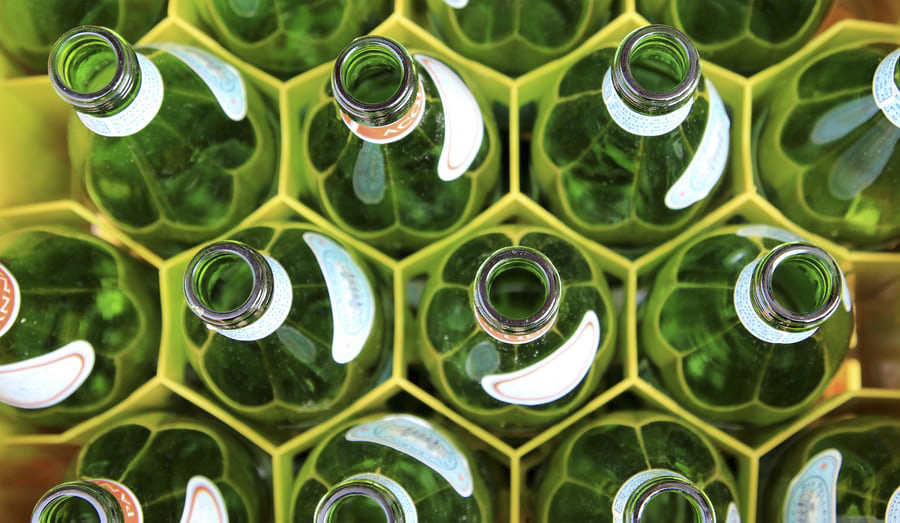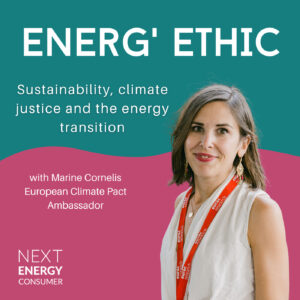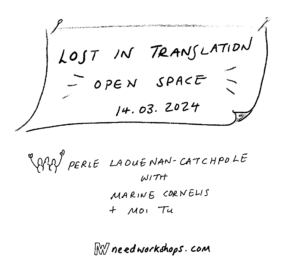I mentioned it in February: the European Commission is not lacking ambition in terms of sustainability. On 11 March 2020, the EC unveiled its plan for the circular economy. Let’s check it out.
What is the circular economy?
A circular economy happens “when everything is healthy food for something else” (Sustainability Illustrated). In a circular economy, we reuse indefinitely materials and products that are already available. Instead of producing –> consuming –> throwing away (the traditional linear model), we re-exploit scraps and unexploited leftovers for other uses. This limits the pollution linked to extraction and gives value to the waste, and bring resources back into the economy. It is all about closing the loop so that raw materials, components and certain goods can be used without losing value.
Does Europe has a “waste problem”?
Each EU inhabitant generated the equivalent of 5 tonnes of waste in 2016, according to Eurostat. At the moment, 173 kg of food per person is thrown away every year, people do not know how to sort out clothes they no longer want or where to turn when an (electronic) device breaks down. If we do nothing, by 2050 we will use the planet’s resources as if there were three available.
Not only the current situation makes no sense from an environmental point of view, in terms of extraction and waste management, it is also an economic boondoggle and it is socially profoundly unfair.
Landfill (45.7 % of waste treated in Europe) takes up land space and is a direct cause of air, water and soil pollution. Incineration generates air pollutants. Waste, including hazardous waste, is often exported to countries where social and environmental standards are lower than in Europe, and where uncontrolled landfills are springing up, further aggravating the situation of local populations. Many countries, such as China, are beginning to refuse the import of trash and are rejecting entire ships and containers from Europe or the US.
Where does European waste come from?
Between 1970 and 2017, “the global extraction and processing of materials, such as biomass, fossil fuels, metals and minerals tripled – and it continues to grow, causing greenhouse gas emissions, biodiversity loss and water stress”, said the EC in a statement.

Eurostat explains that “construction contributed 36.4 % of the total in 2016 and was followed by mining and quarrying (25.3 %), manufacturing (10.3 %), waste and water services (10.0 %) and households (8.5 %); the remaining 9.5 % was waste generated from other economic activities, mainly services (4.6 %) and energy (3.1 %).”
In 2016, only 37.8 % of the waste treated in Europe was recycled, and “only 12% of secondary materials and resources [are] being brought back into the economy”, according to Frans Timmermans, the Executive Vice-President for the European Green Deal.
What is in the EU Circular Economy Action Plan?
The European Union’s ambition is to become carbon neutral by 2050; it is one of the objectives presented in the Green Deal in December 2019. With this Action Plan, the EU aims to “make our economy fit for a green future, strengthen our competitiveness while protecting the environment and give new rights to consumers”. “The new rules will in particular address the need to improve product durability, reusability, upgradability and reparability, addressing the presence of hazardous chemicals in products and increasing the recycled content in products”, the EC added. The EU will build on the work done since 2015, including the first Circular Economy Package and the directive banning single-use plastics by 2021.
In practice, through this Plan, the EU wants to “make sustainable products the norm”, “empower consumers”, and reduce waste while focusing on the “highest potential sectors”. Those sectors are electronics and ICT; batteries and vehicles; packaging; plastics; textiles; construction and buildings; and food. Some of these sectors, such as textile, had been quite overlooked so far in pan-European measures. Interestingly, by exploiting and reusing resources for as long as possible, Europe also aims to solve its problem of dependence on raw materials from third countries.
At the economic level, a report by the European Environmental Bureau (2019) underlined that extending the lifespan of very widespread household equipment such as smartphones, laptops, washing machines and vacuum cleaners by one year “could reduce CO2 emissions by as much as taking two million cars off of Europe’s streets”. With circular economy principles, the Commission believes the EU could increase its GDP by an additional 0.5% by 2030 and create around 700,000 new jobs. The EU sees this plan as a way to stimulate market innovation and encourage new business models.
We want to empower consumers by launching concrete actions on:
📱 Electronics and ICT
👕 Textiles
🥤 Plastics
🍟 Food & 📦 Packaging
🗑️ Waste#EUGreenDeal pic.twitter.com/lgWHAX2B0u— European Commission 🇪🇺 (@EU_Commission) March 11, 2020
How is the Plan going to “empower consumers”?
It will be easier for European consumers to adopt “green” behaviours. They will receive more information on the overall sustainability of the product, including their environmental performance. European consumers will be entitled to a “right to repair” (electronic) products by 2021. Phone chargers will become intercompatible. The EU plans to extend the Ecodesign rules to non-energy products, to encourage manufacturers to produce “sustainable by design” goods and help people make the most ecologically-sensible choice. Stricter rules will apply on overpacking, microplastics, planned obsolescence and greenwashing. Waste sorting instructions will be (finally!) harmonised. The quality and durability of textiles will be improved, to make it easier to give them a second life. A comprehensive Farm-to-Fork strategy will respond to the food waste problem. People will no longer have to worry about the banned chemicals they could find in their daily products.
Is it going to be enough?
While the European Union’s approach is clearly heading in the right direction, it is perhaps regrettable that it does not go further and that the examples do not extend to more sectors. The European Environmental Bureau points out the lack of binding EU targets and a lack of waste prevention targets for the industry.
Overall, our enormous appetite for new, cheap and shiny new devices may not be entirely tempered by the measures. We can also wonder if our smart technologies at home, from smart meters to smart devices, will become entirely compatible with a more frugal lifestyle. And at what cost for the whole planet? Research has shown that, in Ghana and the Democratic Republic of the Congo, the race for raw material leads to health and safety issues for the miners.
It will, therefore, be necessary for the EU to demand and apply very strict measures in its trade agreements with third countries, not only at the environmental but also at the social level, applying fully the Sustainable Development Goals.
Other resources
I strongly recommend this excellent video from Sustainability Illustrated for a better understanding of what Circular Economy is:





2 Responses